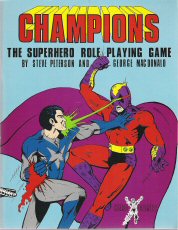There's an interesting pair of posts on Kotaku about box art, where they interviewed some designers about the creation process for package art. I'm certainly impressed with artistic quality, and with how much effort (and money) it can take to achieve a beautiful cover that adequately captures the essence of the product. The craa product marketing side of me wonders if that's really money well spent... I recall many SF and fantasy novels where the cover art had little or nothing to do with the contents, but was probably chosen for its low cost. Was there any noticeable effect on sales? For that matter, many fiction novels have little or no art on the covers; sometimes it's just a treatment of the text for the author and the title, perhaps embossed or foil-stamped. Other novels may have a small photo of a gun or a rose or some other item emblematic (perhaps) of the story inside.
Nowadays many games have such excellent artwork that the cover art is taken directly from screen renderings. Given this, it's probably better to spend more effort on a distinctive logo (usually a type treatment) than on unique cover art. Cover art's importance dates back to a time when retail shelf presence was a significant factor in game sales. These days, even when your product is sold in a retail store, it's rarely face out (and if it isn't, your cover art doesn't help sell it). Most of the time customers go into the store to ask about something they've heard of online... I think the ability of cover art to help sales has diminished. I love beautiful cover art, but if you're looking for a way to use your money to increase sales, spending a lot extra on cover art probably isn't it.
Anthropic and the Future of Copyright
1 month ago





